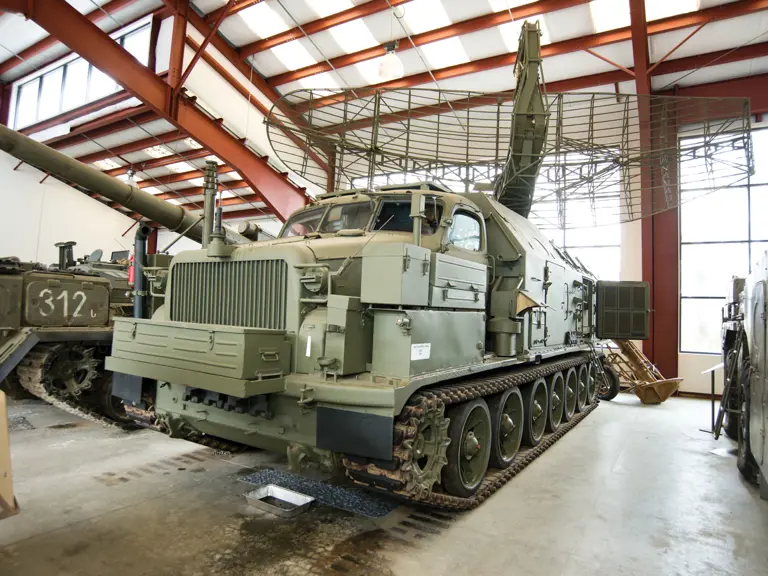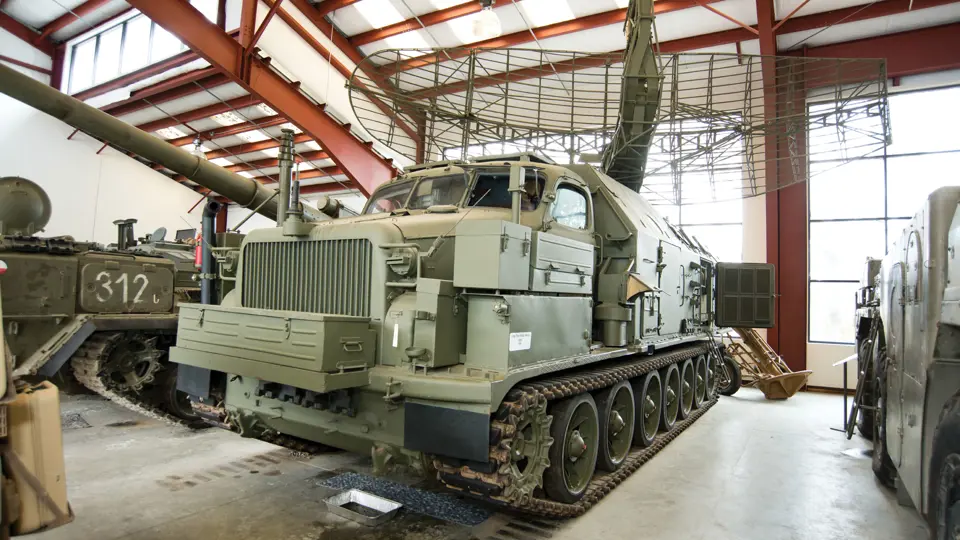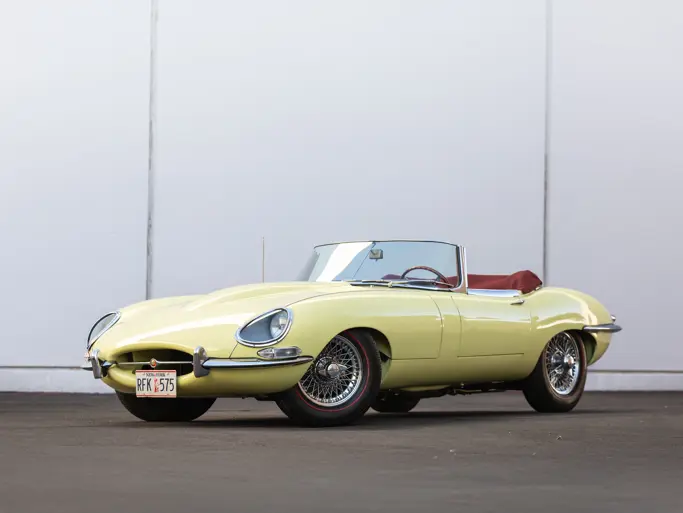 | Portola Valley, California
| Portola Valley, California
Weight: 39.7-tons (36,000-kg)
Length: 30’ 7” (9.33-m)
Width: 10' 6” (3.21-m)
Height: 10' 8” (3.25-m) transport configuration
14’ 2” (4.35-m) working configuration
Crew: 6
Engine: 12-cylinder A-426 diesel, 520-hp
Power/weight: 13.10-hp/ton
Fuel Capacity: 380-USG (1,440-l)
Range: 125-miles (200-km)
Speed: 21-mph (35-km/h)
The vehicle being offered, Radar 1S12/1RL1238, is in good, but unrestored condition. It is in its original paint. The exterior needs some paint touch-up, but is in overall good condition. The wheels and tracks are serviceable. The vehicle runs and has been driven, but should be serviced. The interior needs a good cleaning and possibly some light cosmetic restoration. Functionality of the radar is not known.
1S12/1RL128 was the first highly-mobile radar accepted into the Soviet air defense forces (PVO). Designed from the outset to be multi-purpose radar, it could serve as both a rangefinder for the early warning system, as well as a target acquisition radar for the anti-aircraft missiles. It was used by the PVO in the P-40 Bronya early warning radar system and as a part of the 2K11 Krug (SA-4 Ganef) SAM. NATO gave the radar designation Long Track. The P-40 was accepted into service in 1963 and 2K11 in 1965.
The chassis for the radar was a modified AT-T chassis, known as object 426, designed in Kharkov by Morozov design bureau. The strange part that both P-40 and 2K11 systems were a hodgepodge of wheeled and tracked vehicles with 1S12 being unique due to the size and weight of it, the other vehicles being smaller. In the P-40 Bronya radar system the vehicle was used as a rangefinder and was called 1RL128 and was used with the conjunction with the truck mounted PRV-9A height finder. In the 2K11 Krug it was used by itself without any auxiliary vehicles.
The radars could detect the aircraft flying at 12,000-m up to 180-km, while the low level ones were detected up to 70-km. The minimal detection height was 500-m. The radar put out 2MW of power. The vehicle had an onboard gas turbine to power the radar and various auxiliary vehicles.
The radars were modified in 1966-68 and again in 1969-70 to increase the range and reliability. They were exported together with 2K11 SAMs to various Warsaw Pact countries and have served in USSR, Poland, Bulgaria, East Germany, Czechoslovakia, Hungary and North Korea as well as various post Soviet States. It is not obsolete and has since been retired in the Russian military, but is still in service in some other militaries.
Transport Cost to Storage: $4,752





